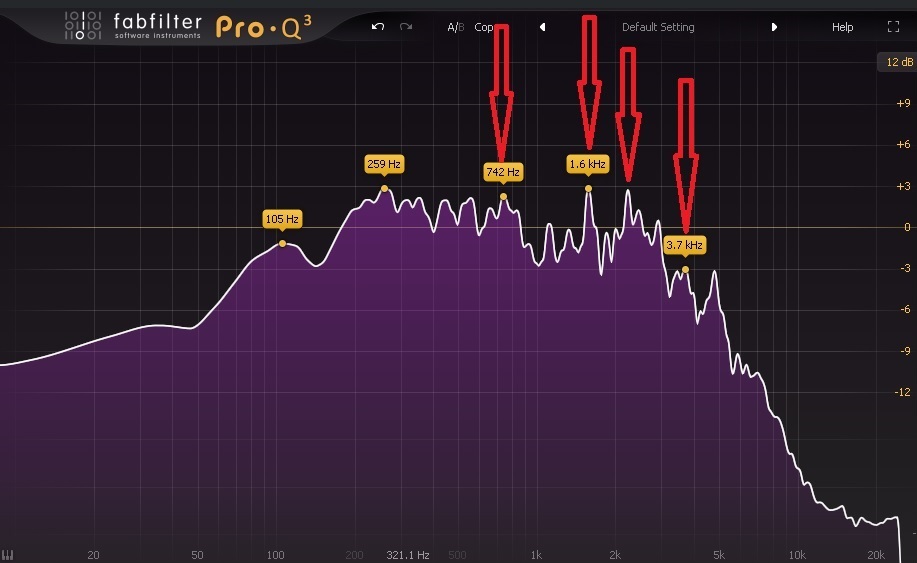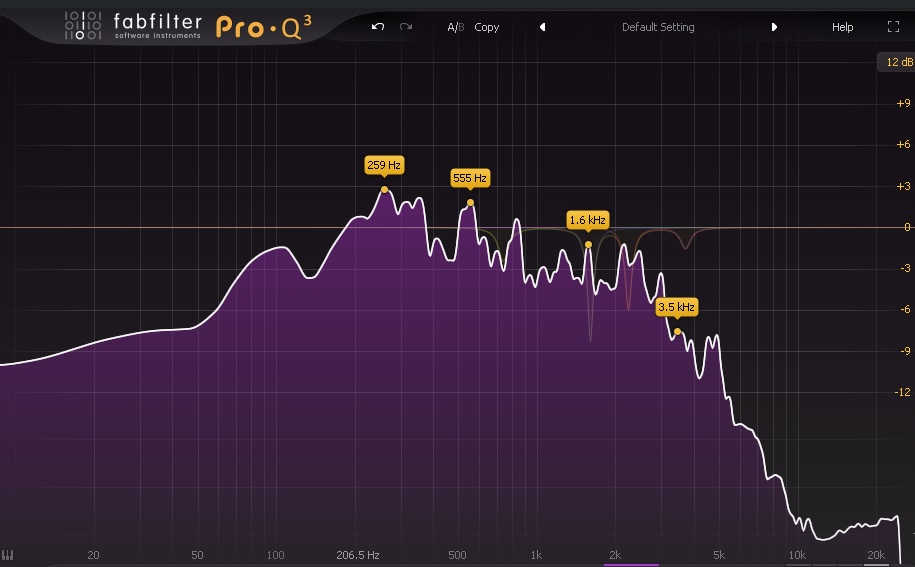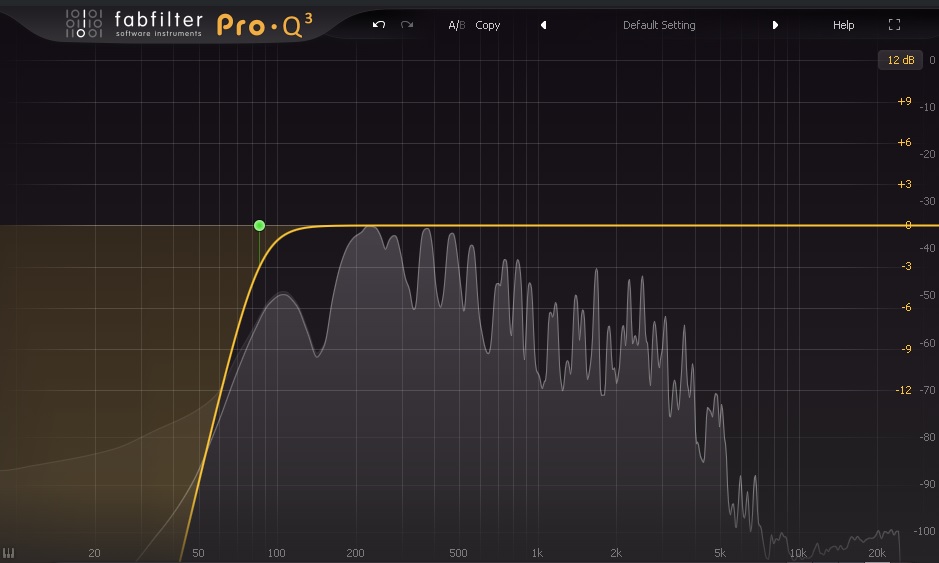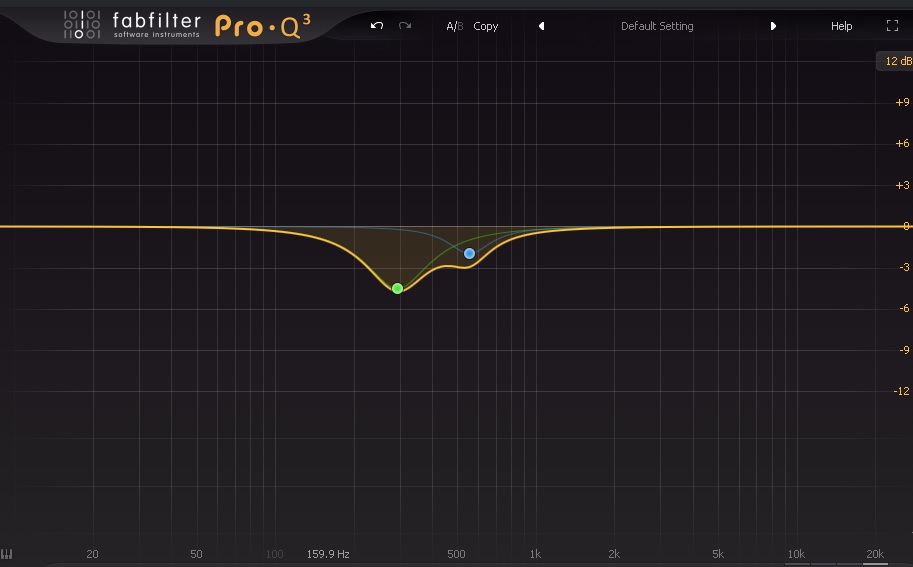If you're reading this, you're already aware of how effective EQ can be in achieving the perfect tone on an electric guitar.
The magic happens when you know exactly where to cut or boost without any guesswork.
On the other hand, if you’re just guessing, then that’s like throwing darts blindfolded. The odds of hitting anything are slim to none. It is a gamble that fails most of the time.
But when done right, EQ can be a powerful tool to help you make the guitar fit perfectly in a mix.
Before getting into EQ, it is recommended to group any guitars that sound the same. There's no need to process them one at a time.
That's not only time-consuming, it's just impractical and a waste of CPU and RAM resources.
How to EQ an Electric Guitar
Depending on the number of guitars that are on a project, I like to equalize them in different stages.
The first stage is surgical EQ; the second step is tonal; and finally, bus EQ (this one is not always necessary).
In this part of the guide, I'm going to break down all those three stages to help you learn how to EQ an electric guitar without any guesswork.
Let's start with the cleanup.
Bringing Out The Best In Your Guitars With Surgical EQ
Surgical EQ is used to clean up instruments and vocals by removing any unwanted frequencies such as boominess, harshness, mud, etc.
The goal is to clean the sound so that when you start processing the guitars, none of those annoying frequencies are exaggerated.
Starting your mixing process with surgical EQ also helps you avoid the confusion of whether to EQ or compress first. So your chain will look something like this…
> Surgical EQ
> Compression
> Tonal EQ
This could change if you decide to add saturation. But one thing that remains the same is that the compressor comes after surgical EQ (before tonal EQ).
If you add compression after tonal EQ, the compressor will focus more on the boosted frequencies, which is usually the opposite of what you want.
Here are the most common problematic frequencies you'll need to cut out, if necessary.
Note:
There's no need to use any fancy 3rd-party plugins during this stage. Use the most basic EQ you have (my go-to is the Pro-Q 3 or Cubase stock EQ)
Resonance: This is where I usually start. You'll need to cut out any resonant frequencies so that when the mix is played at loud volumes, it doesn't sound piercing to the ear.
These usually sound like whistles, and you'll have to sweep around the frequency spectrum to find them. You'll mostly find them in the midrange and high frequencies.
Make sure that you're using a narrow Q-factor (bandwidth) when cutting so that you don't make the guitar sound dull.
If the resonant frequencies only occur in certain parts of the song, use a dynamic EQ.

Identifying Resonant Peaks

After Fixing Resonance
Rumble: Some engineers use the words "deep bass" to explain this frequency range. These frequencies are not necessary for a mix that's got kick and bass.
So, you need to cut these frequencies to clean the low end and create space for the kick and bass.
If you're using samples or VST instruments, then be careful because those are usually clean and have no rumble. Use a frequency analyzer if you're not mixing in an ideal environment (a well-treated room).
To remove the rumble, all you need to do is apply an HPF (high-pass filter) at around 80Hz to 100Hz. Just be careful not to remove too much because too much can make the guitar sound thin.

Muddiness: Removing muddy frequencies on a guitar can help the guitar sound much clearer and create space for low midrange instruments such as pads, strings, keys, snare, conga, etc.
You can find these frequencies around 300Hz to 600Hz. Use a bell filter with a Q-factor of 2 (as a starting point).
Just don't cut to a point where the guitar starts losing its fullness and body. Once you start hearing the bass and low midrange instruments start to sound audible and clear, that's your sweet spot.

Harshness: When the guitar sounds harsh, it will clash with the vocals or just make the song sound piercing when played at loud levels. This is why it's crucial to address this problem when it's necessary.
A small, wide cut usually does the trick. If you find yourself needing a bigger cut, then just make sure that you reduce the Q-factor as well, because a big, wide cut will affect necessary frequencies.
You can find these problematic frequencies from 2kHz to around 3.5kHz. If a static cut is making the guitar sound dull, then use a dynamic EQ instead.
Hiss: Anything that's above 11kHz on a guitar is usually brittle and unwanted. There are no fundamentals above 11kHz so you mostly want to cut anything above 11kHz using an LPF (low-pass filter).
This will remove any hiss and create space for top-end instruments such as hi-hat, shaker, tambourine, cymbals, etc.
Enhancing Guitars With Tonal EQ
By tonally EQing certain frequencies, you can make guitar sound bigger and more prominent in the mix.
This is when you can start using your fancy plugins and real hardware gear to add life to the guitars.
The main reason you want to use hardware or emulators is simply that they add extra harmonic content, aka saturation.
Extra harmonic content from saturation adds more depth and richness to a sound. So this is why I don’t recommend a clean equalizer for tonal shaping (unless you just want a clean sound).
Here are the common frequencies that you need to boost to enhance the sound of your guitar tracks:
Fullness and Body: At some point, you might find yourself mixing an electric guitar that sounds too thin. You can use an EQ to add some weight to the guitar by boosting frequencies between 100Hz to 350Hz.
You have to be careful with this frequency range because too much can muffle the bass or make the guitar sound boomy.
So, don't boost these frequencies by default. Make sure you're boosting because the guitar needs it.
Clarity: An electric guitar's meat and clarity are usually found around 1kHz to 2.5kHz. Boosting these frequencies will help with clarity and make the guitar notes more audible.
Use a small, wide boost so that you can bring up a broader range of notes. A narrow boost will bring up a single note, which will defeat the purpose. A Q-factor of 2 to 1 is usually where you’ll find the sweet spot.
Presence: Bringing up the presence on a guitar will help it cut through the mix, especially if you're working on a dense mix. This will also boost the snap of the pick and increase the attack.
You can find the presence of an electric guitar between 2kHz up to around 5kHz. Too many of these frequencies can cause the guitar to sound harsh or clash with the vocals (if the song has vocals).
Brightness: Adding some sheen can bring life to a dull-sounding guitar track. This can also help the guitar cut through a mix that has a lot of instrumentation.
You can add some shine to the guitar by boosting frequencies around 7kHz to 12kHz. You can use either a bell or a shelf filter. A bell will mostly add sheen without introducing any unwanted hisses.
Increasing this frequency range can also bring up the "buzz" from the distortion unit (if you used one during recording).
Electric Guitar EQ Cheat Sheet
This electric guitar EQ cheat sheet should help you reduce guesswork when equalizing an electric guitar.
If your guitar is sounding harsh, then you know where to locate the problematic frequency.
This will help you save a lot of time, and as a result, you'll be able to finish your mixes a lot faster.
Here's the cheat sheet:
Rumble: 80Hz - 100Hz
Fullness: 100Hz - 350Hz
Muddiness: 300Hz to 600Hz
Clarity: 1kHz - 2.5kHz
Harshness: 2kHz - 3.5kHz
Presence: 2kHz - 5kHz
Hiss: 12kHz and above
Brightness: 7kHz - 12kHz
Always keep in mind that this guideline should be used as a starting point. This means the numbers can change slightly depending on how the guitar was recorded.
So, don't be scared to sweep above or below a numbers that are mentioned in the cheat sheet.
Remember, mixing is an art form; it's not science or mathematics.

How to Equalize Distorted Electric Guitar
A good starting point for equalizing distorted guitars is to find any resonant peaks and cut them. This will reduce any piercing frequencies so that you can listen to the mix at loud volumes without any harshness.
Once you have that done, it's always recommended to check the low end. This is a common issue with distorted guitars; they tend to have too much low-end buildup.
You can simply remove unwanted rumble by using an HPF to cut out any frequencies below 80Hz to around 100Hz.
Next, make sure that no boominess interferes with the bass. These are frequencies around 100Hz to 250Hz. Just be careful not to cut when it’s not necessary because it will make the guitar sound thin.
Another area that you might need to reduce is the muddiness in the lower midrange.
Muddy frequencies are usually found in the 300Hz to 600Hz range. If the guitar sounds boxy, you can fix that by reducing frequencies around 500Hz to 2kHz.
Distorted guitars don't usually sound harsh since the distortion effect shaves off a lot of the transients. But if they are harsh frequencies, then sweep around 2kHz to 3.5kHz to find the problematic frequencies and reduce them.
Also, use an LPF to cut out everything above 11kHz, there's nothing but brittle up there.
For the enhancement part of the guitar, you can boost around 2kHz to 4kHz to bring up the presence and attack so that the guitar can cut through.
Bring up some sheen by boosting 8kHz to around 12kHz using a shelf filter (but make sure that you cut everything above 11kHz using an LPF).
Wrap
That’s how you get the best EQ settings for an electric guitar. With this guide, you’ll be able to equalize any type of electric guitar, no matter the genre.
Now, it’s your turn to leave a comment below to let me know what you’ve learned and which of these techniques you're going to apply first.